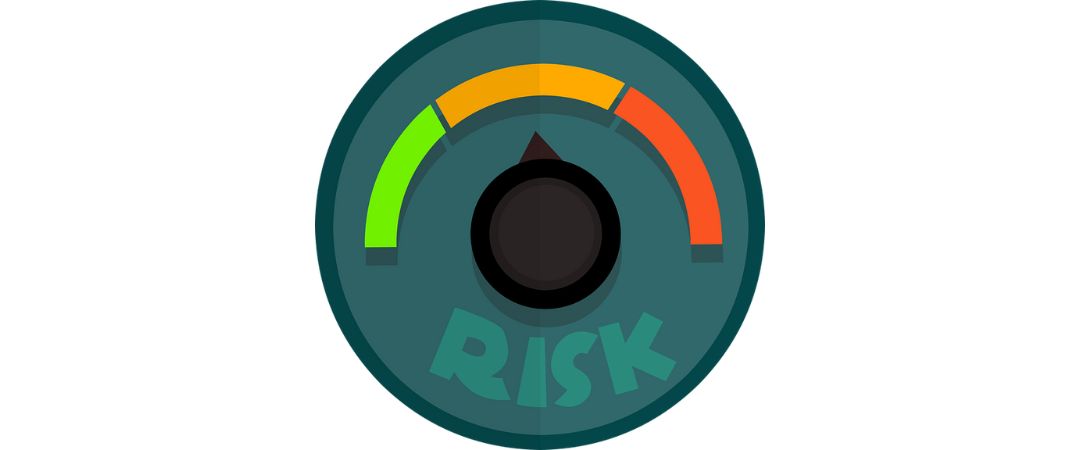Are you looking for a reliable way to generate steady income during retirement? A CD ladder for retirement income might be the solution. This strategy involves spreading your money across multiple certificates of deposit (CDs) with different maturity dates. By doing so, you can enjoy regular access to funds, earn higher interest rates, and minimize the impact of fluctuating interest rates.
To learn more about all things retirement, visit our comprehensive IFW retirement guide or watch our free retirement webinar to discover personalized tactics for reaching your retirement goals.
Key Takeaways
- Building a CD ladder includes steps such as determining the investment amount, selecting maturity dates, and choosing high-quality CDs to balance higher interest rates with regular access to funds.
- While CD ladders provide steady and secure income, they offer lower returns compared to stocks and may limit liquidity; hence, diversifying investments and regularly monitoring the ladder are crucial for managing risks. To properly assess how you should be diversifying your investments, find out your retirement score today and improve your chances for a secure future.
To learn more about diversifying and adding additional income streams to your financial plan.
Understanding CD Laddering for Retirement

You can unlock the secret to a stable and predictable retirement income with a powerful and simple strategy: CD laddering – let me explain.
A CD ladder is a retirement investment strategy that involves spreading a lump sum of money across multiple CDs or certificates of deposit with different maturity dates. This approach, akin to the bond ladder strategy, aims to create predictable cash flow and manage interest rate risk effectively. The primary objective of CD laddering is to:
- Lock in high annual percentage yields (APYs) across multiple CDs
- Diversify investments by spreading funds across different accounts
- Create a steady stream of income by staggering the maturity dates of the CDs
This strategy allows investors to take advantage of higher interest rates on longer-term CDs while still having access to some portion of their funds on a regular basis. By implementing a CD ladder, investors can maximize their returns and minimize the impact of changing interest rates.
A CD ladder offers the following benefits:
- Regular income
- Improved liquidity and flexibility
- Steady cash flow
- Adaptability to changing financial needs
- Protection for retirees
By incorporating staggered maturity dates, a CD ladder allows you to choose whether to reinvest the funds or withdraw the money as each CD matures. This strategy is particularly beneficial for retirees looking to secure a stable income while managing the uncertainties of fluctuating interest rates [1].
How Does CD Laddering Work?

Now that we understand what a CD ladder is, how does it actually work? Let’s break it down:
Creating a CD ladder involves splitting your investment funds into equal portions and allocating assets to CDs with different maturity timelines. This method allows you to earn higher rates while maintaining access to portions of your money at regular intervals.
As each CD matures, you can either reinvest the funds into a new CD with a longer term or withdraw the money if needed, thereby continuing the ladder and ensuring a steady stream of income.
Strategies for Building a CD Ladder

Building a CD ladder involves a few critical steps:
- Determining the investment amount and timeline
- Selecting CD maturity dates
- Choosing high-quality CDs
This investment strategy is indeed designed to balance higher interest rates with regular access to funds.
When the first CD matures, reinvesting the funds in a new CD continues the ladder and helps maintain the strategy. You can use various structures such as mini ladders, barbell ladders, and bullet ladders, each catering to different financial goals.
This flexibility allows you to tailor the ladder to your specific retirement needs, ensuring a predictable income stream while managing interest rate risk.
Determine Investment Amount and Timeline

Start by calculating how much money to deposit in each CD based on your financial needs and goals. For instance, if you are building a five-year CD ladder with $2,500, you might invest:
- $500 into a one-year CD
- $500 into a two-year CD
- $500 into a three-year CD
- $500 into a four-year CD
- $500 into a five-year CD
The initial investment amounts can vary to maximize yields based on current rates.
Select CD Maturity Dates

Selecting CD maturity dates is crucial for balancing short-term access to funds and long-term stability, just as when bonds mature. Opening CDs with varying terms, for example, one to five years, ensures regular liquidity.
Diversifying your CD ladder across multiple financial institutions can also help you secure the best interest rates for each term [2].
Choose High-Quality CDs
Choosing high-quality CDs from reputable institutions offers the following benefits:
- Minimizes credit risk
- Secures reliable returns
- Protects your principal
- Provides steady returns
- Makes them a stable component of your retirement income strategy.
This approach ensures that your investments in fixed income security remain secure while generating a steady income during retirement.
Managing Interest Rate Risk with CD Ladders

Interest rate risk is a significant concern for retirees relying on fixed income securities and should be planned for accordingly.
CD laddering helps manage this risk by spreading investments across various maturities. This diversification minimizes the impact of interest rate fluctuations on your savings, ensuring regular access to funds as CDs mature at different intervals.
Reinvesting maturing CDs and maturing bonds at prevailing interest rates can potentially increase overall returns.
Interest Rate Fluctuations

CD laddering mitigates the risk of locking money at low interest rates for an extended period. The risk of changing interest rates can be managed by incorporating a variety of maturities and instruments.
A balanced CD ladder can include both short-term CDs for higher immediate rates and long-term CDs for stability against market fluctuations.
Reinvestment Strategies
Reinvestment strategies involve keeping an eye on interest rates and market conditions to make informed decisions when reinvesting maturing CDs. Services like Fidelity’s Auto Roll can automate this process, ensuring that your investments remain balanced and aligned with your financial goals.
Maintaining a diversified portfolio while capitalizing on rising interest rates can be achieved by reinvesting near-term proceeds into new fixed-income securities at the top of the ladder.
Maximizing Income with CD Ladders

CD ladders can maximize retirement income through staggered maturities, reinvesting at higher yields, and balancing short-term and long-term CDs. Setting up multiple CDs with staggered maturity dates allows retirees to create a consistent cash flow and ensure regular income intervals.
Retirees can benefit from rising interest rates and potentially increase their income over time by reinvesting matured CDs into new ones offering higher yields. Balancing short-term CDs for liquidity needs and long-term CDs for higher yields is crucial to optimize returns and access funds when needed.
Staggered Maturities for Steady Cash Flow

Investing in CDs with staggered maturities offers several benefits:
- Ensures a steady stream of income as each CD matures at different times
- Provides consistent cash flow
- Allows for regular access to funds
- Offers a reliable strategy for managing retirement income.
A 1-year CD ladder, for example, can have CDs maturing every 3 months, offering more frequent access to principal.
Reinvesting at Higher Yields
Reinvesting funds from maturing CDs into new accounts can lock in higher annual percentage yields (APYs), especially when interest rates rise. This strategy can enhance the overall growth of your CD ladder, as higher yields translate to greater returns over time.
Shopping for the best CD rates for each term can also maximize your returns.
Balancing Short-Term and Long-Term CDs
Balancing short-term and long-term CDs allows you to maintain liquidity while benefiting from higher interest rates associated with longer-term CDs. A barbell CD ladder structure, for example, provides both liquidity and higher interest rates by having short-term CDs at one end and long-term CDs at the other.
Risks and Considerations

Despite the numerous benefits of CD laddering, considering potential drawbacks and ensuring proper risk management is vital. CD ladders may not offer interest rates as high as potential returns from the stock market. Additionally, investors might lose access to their money for a period due to the fixed terms of CDs.
Diversifying your investments and periodically monitoring and adjusting the CD ladder to align with your financial goals and market conditions is of utmost importance.
Schedule a call with the Institute of Financial Wellness today so we can help you come up with an approach that helps mitigate exposure to market risks and ensures that your investment strategy remains effective.
Potential Drawbacks

Some of the main drawbacks of CD laddering are:
- the lower average rate of return compared to stocks
- CD laddering might limit liquidity, as funds are tied up until CDs mature
- investors may also face penalties for early withdrawal, reducing the flexibility of their investment.
Diversification and Risk Management
While CD ladders provide a secure investment, it’s crucial to diversify with other fixed-income securities to hedge against broader market risks. Retired individuals should consider various investment options, including bonds, certificates of deposit (CDs), and cash, to ensure adequate diversification and risk management.
Diversified portfolios can mitigate exposure to market risk by spreading investments across various asset classes.
Monitoring and Adjusting the Ladder

To ensure alignment with current market conditions and personal financial goals, regular review and adjustment of the CD ladder is essential. Staying on top of different maturity dates helps manage reinvestment and optimize returns.
Periodically adjusting the ladder can maintain liquidity and adapt to changing personal or market conditions.
Comparing CD Ladders to Other Fixed Income Strategies

CD ladders can be compared to other fixed income strategies like bond ladders and bond funds. Both bond ladders and CD ladders aim to reduce risk and provide predictable income streams, but they differ in terms of diversification, fees, and liquidity.
Bond ladders offer greater diversification and exposure to various bond types, whereas CD ladders are limited to the issuing bank’s offerings. Additionally, bond funds offer higher liquidity and professional management but may come with higher fees [3].
Bond Ladders vs. CD Ladders
Bond laddering involves spreading out the risk by buying a mix of short-term and long-term bonds. This strategy helps to manage the effects of interest rate changes. The strategy is designed to either decrease risk or capitalize on a potential increase in interest rates to maximize returns. It focuses on managing and leveraging the impact of interest rate movements. A well-diversified bond ladder helps protect the investment and provides efficient and flexible income tailored to the time period.
However, potential drawbacks include lower interest rates, loss of liquidity, and potential fees from multiple transactions.
CD Ladders vs. Bond Funds
CD ladders generally have no fees or low fees compared to bond funds, which often have management or mutual fund fees. While CD ladders provide predictable income with predetermined interest payments, bond funds offer higher liquidity due to the secondary market availability, making access to funds easier.
However, bond funds offer greater diversification and professional management, spreading risk across various issuers and bond types, as opposed to investing in individual bonds.
Summary

As an approaching retiree, CD laddering emerges as a robust strategy for securing steady retirement income while managing interest rate risks.
By investing in multiple CDs with staggered maturity dates, retirees can enjoy a reliable cash flow, flexibility, and reduced risk. While potential drawbacks exist, such as lower returns compared to stocks and limited liquidity, these can be mitigated through diversification and regular monitoring. In comparison to other fixed income strategies, CD ladders offer a unique blend of security and predictability, making them an attractive option for conservative investors. Embracing CD laddering can pave the way for a financially secure and stress-free retirement.
Schedule a call with the Institute of Financial Wellness today so we can help get you on the road to a secure retirement!
Frequently Asked Questions
What is a CD ladder?
A CD ladder is a strategy where you buy several CDs with different maturity dates to manage interest rate risk and ensure a steady income during retirement. It can help you access your funds at regular intervals without locking all your money into one long-term CD.
What are the benefits of CD laddering for retirement?
CD laddering for retirement provides enhanced flexibility, reduces interest rate risk, and ensures stable cash flow by offering consistent access to funds at regular intervals.
What are the potential drawbacks of CD laddering?
The potential drawbacks of CD laddering include lower average returns compared to stocks, limited liquidity due to fixed CD terms, and penalties for early withdrawal. It’s important to weigh these factors when considering this investment strategy.
How does CD laddering compare to bond ladders and bond funds?
In conclusion, CD laddering offers predictable income and low fees, while bond ladders provide greater diversification and risk management, and bond funds offer higher liquidity and professional management but may come with higher fees. Choose the strategy that best aligns with your financial goals and risk tolerance.




